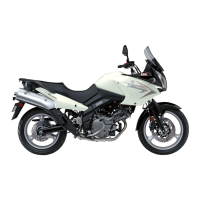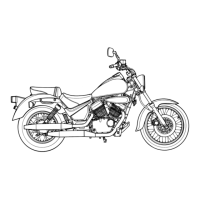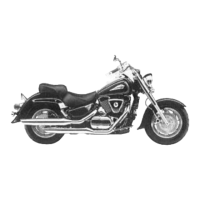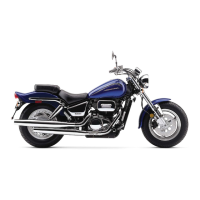Do you have a question about the Suzuki V-Strom DL650 2017 and is the answer not in the manual?
Explains the meaning of WARNING, CAUTION, NOTICE, and NOTE signals used in the manual.
Stresses the importance of reading and following manual instructions for safety and proper operation.
Covers common accident causes, helmet use, collision response, and defensive riding.
Addresses riding in special conditions, knowing limits, bad weather, and practice.
Details pre-ride inspections, accessory use, loading, and carrying passengers safely.
Covers street smarts, labels, and concludes with safe riding principles.
Specifies unleaded gasoline requirements, octane rating, and oxygenated fuel compatibility.
Details recommended engine oil types, API/JASO classifications, and viscosity.
Recommends specific coolant types and mixture ratios for optimal engine cooling.
Identifies and illustrates key parts of the motorcycle for user familiarization.
Explains ignition switch positions and describes instrument panel indicators.
Details controls on both left and right handlebars for operation and safety.
Covers gearshifting, rear brake operation, seat lock, and side stand.
Explains rear suspension adjustment, windshield height, and output terminal.
Provides guidelines for breaking in the engine and tires for optimal performance.
Outlines essential checks for steering, throttle, brakes, tires, and other components.
Details engine starting procedures and how to start off and shift gears smoothly.
Guides on using the transmission and tips for riding on hills and slopes.
Covers proper stopping, parking, ABS, and carrying passengers safely.
Advises on selecting and installing accessories, warning against unsuitable additions.
Specifies Gross Vehicle Weight Rating (GVWR) and warns against overloading.
Warns against modifications affecting safety, legality, emissions, or frame integrity.
Outlines periodic inspection and maintenance tasks based on time and mileage intervals.
Covers lubrication, engine oil, coolant, and drive chain maintenance procedures.
Details battery care, charging, safety, and fuse checks/replacement.
Explains air cleaner service, spark plug checks, and fuel hose inspection.
Covers inspection, maintenance, and replacement of brakes and tires.
Includes spoke wheel, wheel removal, light bulb replacement, and catalytic converter.
Guides on checking the fuel system, especially when the 'FI' light is illuminated.
Explains how to check the ignition system for spark and addresses engine stalling.
Covers storage, returning to service, corrosion prevention, and cleaning.
Advises on checking brakes after washing and lubricating according to points.
Covers warranty information and emission control system requirements.
Details reporting safety defects, noise control, and on-board computer data.
Shows locations of serial numbers and important warning labels on the motorcycle.
Lists overall dimensions, curb mass, and detailed engine specifications.
Details drivetrain, chassis, electrical system, and fluid capacities.
| Displacement | 645cc |
|---|---|
| Bore x Stroke | 81.0 mm x 62.6 mm |
| Compression Ratio | 11.2:1 |
| Fuel System | Fuel injection |
| Starter | Electric |
| Transmission | 6-speed constant mesh |
| Final Drive | Chain |
| Lubrication | Wet sump |
| Front Suspension | Telescopic, coil spring, oil damped |
| Rear Suspension | Link type, coil spring, oil damped |
| Fuel Tank Capacity | 20.0 L (5.3 US gal) |
| Overall Length | 2290 mm (90.2 in) |
| Overall Width | 835 mm (32.9 in) |
| Overall Height | 1405 mm (55.3 in) |
| Ground Clearance | 170 mm (6.7 in) |
| Seat Height | 835 mm (32.9 in) |
| Curb Weight | 213 kg (470 lbs) |
| Engine Type | 4-stroke, DOHC, 90-degree V-twin |
| Front Brakes | Double disc |
| Rear Brakes | Single disc |
| Front Tire | 110/80R19M/C |
| Rear Tire | 150/70R17M/C 69V |
| Wheelbase | 1560 mm (61.4 in.) |












